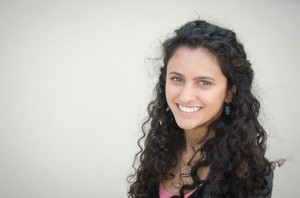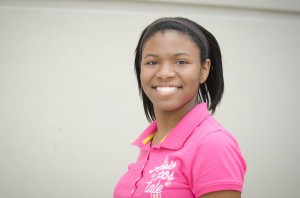The view from the assembly podium has changed drastically in the past two decades. Once upon a time, we would look into the crowd and be greeted by an ocean of white. Now, we see a colorful sea of people looking back as one unified student body.
Diversity at our school has increased drastically since 1996, as the percentage of non-Caucasians in our student body has grown from 14% to 33%.
“It is part of the mission of the school to increase diversity and to have that global perspective,” said Sherry Hay, Director of Admission and Financial Aid “This includes religious, ethnic and economic backgrounds which we boost with financial aid.”
However, while the numbers show an increase, others believe that there is still room for improvement.
10th grade English teacher Susan Speicher has been teaching at the school for 28 years and has not noticed a pronounced difference.
“I don’t think it’s changed that much,” Speicher said. “There are probably more students of color than there were before but not significantly more.”
She provides good reason for her observation.
“I’m on an admission committee, and we do give preference as much as we possibly can to diversity,” Speicher said. “However, you also have to look at a student’s background and whether or not he can handle the work here. If he is motivated, he can handle it, but if he isn’t or he doesn’t have the support at home, he won’t succeed.”
Math teacher George Venketsamy observes the racial trends that have developed during his 20 years at the school. He believes that increasing minority presence will encourage our students to develop personally.
“I do notice sometimes that down to the wire we tend to our own kind. If you look in the Grille, you’ll see people gravitating towards their own kind, which we used to call de facto segregation back in South Africa,” Venketsamy said. “If we do have diversity, people will be forced to judge people based on their own merits rather than on their ethnic backgrounds and the color of their skin, which now we know is very superficial but permeates a lot of our perceptions.”
Venketsamy points out that the lack of faculty diversity inhibits our efforts to increase student minority presence.
“I’ve seen a lot of change in the student body, and there are a lot more minorities than there were when I started in 1994,” Venketsamy said. “However, among the faculty, there hasn’t been any change over the years.”
At his previous school, Venketsamy saw the effects that a diverse faculty can have on students and believes that it greatly enhances the overall school culture, making it easier for minority students to integrate themselves into our student body.
“I think we can and we should more aggressively look out for more minority teachers not just because they are minorities, but [because] they have an effect on students,” he said. “I do perceive that it matters to students that I come from a different ethnic background, especially to those who come from so-called minorities. They can relate to me in ways that I sometimes feel they don’t relate to all… teachers.”
Venketsamy, who previously worked at the private school Lick Wilmerding High School in San Francisco, watched the administration at that school make a strong effort to break racial boundaries in their community. Now, after a two-decade journey, the school boasts a student body with more than 50% students of color.
Al Adams, previous headmaster of Lick Wilmerding, spearheaded the initiative to increase diversity within the school and put a number of policies in place to support students of color.
“On average schools budget about 10% of their annual budget for financial aid, which helps to support 16 – 18% of their student body,” Adams said. “At Lick, we allocated 25% of our budget to what we call flexible tuition that supported 42% of the student body… We were very careful to distribute across the economic spectrum so we would have families from all walks of life.”
Along with more financial aid, the school used extremely targeted methods to find qualified teachers of color in order to enhance its faculty.
“We would recruit from historically black colleges or we would go to graduate schools of education and talk with people there about what our goal was and see if they would recommend some of their students to us. We followed some nonstandard routes so we could enlarge the pool of teacher-of-color prospects and over time had success,” he said.
However, while these approaches towards increasing diversity in the student body and faculty work in San Francisco, our location in Central Florida makes it difficult for them to be effective methods here.
“We actually are, relative to other schools, fairly diverse even though there are those who come on campus and think we’re not,” Headmaster Craig Maughan said. “But they forget that certain parts of the country have a demographic to pull from that is different.”
This unique problem forces administration to look to other approaches to maintain diversity at the school.
“When we do our marketing we do try to advertise to a variety of different publications … that serve different ethnic groups and would [allow] people of different… backgrounds to know about the school,” Maughan said.
About 10 years ago, when Maughan searched for a way to potentially increase diversity within the faculty, he looked to the University of Central Florida graduate school of education to discuss the possibility of hiring teachers.
“Something close to 300 graduates were graduating that year, and maybe about 280 of them were elementary school teachers,” Maughan said. “We also have a fairly limited turnover here so it became difficult to think about a way to have a real direct relationship even though it’s right down the road.”
Along with location, religious affiliation could also be a factor in reducing diversity within the faculty.
“We don’t require any candidate to be Christian,” said Maughan, “but we do require that they understand and support the mission of the school… They have to be able to accept that this is who we are as a school, but I would imagine that there are sometimes people who may not be an applicant here because they don’t feel they could teach at a school like this.”
Still, Maughan holds diversity among the student body and faculty as an important goal for the school, and he works to maintain the level of diversity that has been accomplished thus far.
“[Diversity] is a goal that the school has so, as a result, it is something that we hold important… The strategies that we might follow… any and all of them can be considered,” Maughan said.
Adams, like Maughan, recognizes the benefits of a diverse environment in a school- diversity allows all students to be better prepared for their future.
“[Students] have spent four years rubbing shoulders with… kids from lots of different backgrounds,” Adams said, “and that’s about as good life preparation you can get.”





